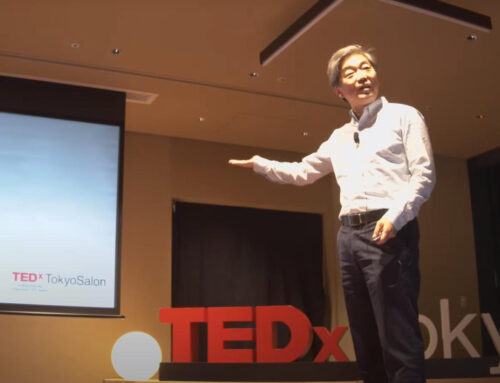Our CEO, Ted Katagi, explains his framework to understanding Japanese culture.
Born and raised in America to Japanese parents, I found myself struggling to assimilate when I moved to Japan for work. A combination of cultural differences, being treated as an outsider because I was raised in America, and wanting to connect with my co-workers eventually pushed me to study Japanese culture in-depth. This led me to developing the “four keys” framework.
The four keys are actually words which encapsulate the characteristics of Japanese culture. They are what I like to call the “four pillars” to understanding the Japanese people:
- Nomin Minzoku (Communal Farming Culture)
The first pillar is about the steady, hardworking and conservative nature of the Japanese.
In the beginning, 95% of the Japanese population were farmers and grew up on farms. Their lifestyle was all about planning and leant towards them being nomin minzoku.
- Kampeki-Shugi (Perfectionism)
The second pillar is about the detailed, considerate and attentive nature of the Japanese.
During the major revolution, the Japanese people became ingrained with the samurai spirit which embodies those three traits. It’s important to note, however, that being kampeki in Japan is very different compared to, for example, Germany. Germans are kampeki, they are perfectionists, but they are kampeki to get results efficiently. For the Japanese, there’s no reason behind being perfectionists, they are kampeki to be kampeki.
- Soncho (Respect)
The third pillar is about being respectful, aware and reverent towards everything in life.
Being soncho is all-encompassing, extending towards your elders, others, and even nature. It is influenced by the importance the Shinto religion places on purity, harmony, respect for nature, family respect, and subordination of the individual before the group.
- Wa
The fourth pillar is about prioritizing others inside and outside the circle and hospitality.
Much confusion revolves around wa because sometimes actions might not seem in line with being wa. But it’s all about perspective. Most times, you won’t recognize an action as wa because you’re outside the circle and it’s meant for those inside the circle.
All behavior by Japanese and every concept in Japan may be explained by one or more pillars.
For behavior, here are two examples:
- Speaking to Japanese People as a Foreigner
On one hand, Japanese people are considerate and go out of their way to assist. On the other, Japanese people avoid foreigners with shouts of “no English” and/or even run away.
These two experiences seem contradictory but they’re not. Both fall under kampeki-shugi.
The first happens when the Japanese person thinks they can be kampeki which could possibly mean they are confident in speaking English and/or are determined to assist. The second happens when the Japanese person thinks they can’t be kampeki, which could mean they don’t speak English well and/or fear they can’t give proper assistance, so they would rather not try.
- Disappointed by Winning
This example perfectly uses all four pillars and is actually what ultimately led to me creating the “four keys” framework.
A few years into my stay in Japan, the company I worked for invited my team and teams from other branches to get together for a friendly competition. What was significant was that my team, the Japanese team, won. I was happy and the other teams were happy, until I realized that my team wasn’t happy. They were shocked and disappointed. I was confused.
It was only when I created this framework that I figured out what was going on.
At the competition, the American teams put on a show with dancing and all. This stressed my team because we had not prepared to do and that meant, in my team’s perspective, that they did not do kampeki. Therefore, while they were respectful to other teams, they couldn’t respect themselves which made them feel conflicted with soncho.
Then there’s wa which directly conflicted with winning.
In total, there were twelve teams; ten were American teams while the other two were my team and a European team. Since the Americans were majority, they were considered the inside of the “circle”. Additionally, the European team won the year before. Hence, to the Japanese, winning was not wa because winning meant that “outsiders” won twice in a row.
And so, my Japanese co-workers were left with nomin minzoku. But only fulfilling one pillar was not enough for them to feel good about themselves which is why they were upset.
As for concepts, here are four examples:
- Bushido – meaning perfection of respect falls under kampeki を促進する機能を提供し、 soncho.
- Tatemae/Honne – the act of holding back opinions to avoid insulting others falls under the spirit of wa, respecting others. (Americans have this too and it’s called, “the elephant in the room”, when everyone avoids speaking about something.)
- Ocha Kai – is all about harmony and the perfect movement when passing the teacup from person to person. It is the perfection of wa.
- Hatsumode – is the New Year celebration which is a combination of all four pillars.
At the very center of the four pillars are the rules and processes that are protected as well as followed in Japan called the “Shukan Process”. These are the habits of the Japanese people.
In business, it’s important to understand the culture of the country you’re working in, with or for. The framework I created helps with that but, even more so, it can also be used to improve workplace culture. Below, I list four values that I think would work well with the four keys:
- Nomin Minzoku = Hunter
Have a farming culture but also think of a hunting culture.
- Kampeki-Shugi = Agile
When thinking about being perfect, be agile and flexible.
- Soncho = Venture
Respect the past and elders but also respect results and the future.
- Wa = Frontier Spirit
Instead of focusing on prioritizing others and hospitality, have a frontier spirit.
The four English values actually describe American culture and have undoubtedly helped America be so successful. However, the key is in combining the values together. Just like when Japan adopted foreign processes in order to improve during, for example, the Meiji revolution, so too will combining the values of two cultures bring about positive change.




